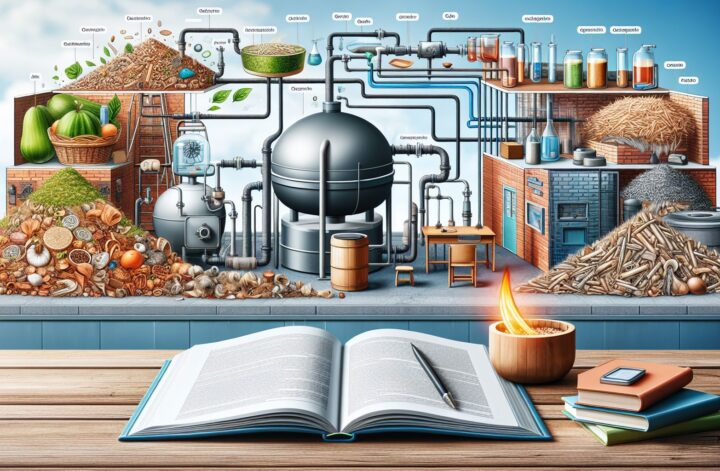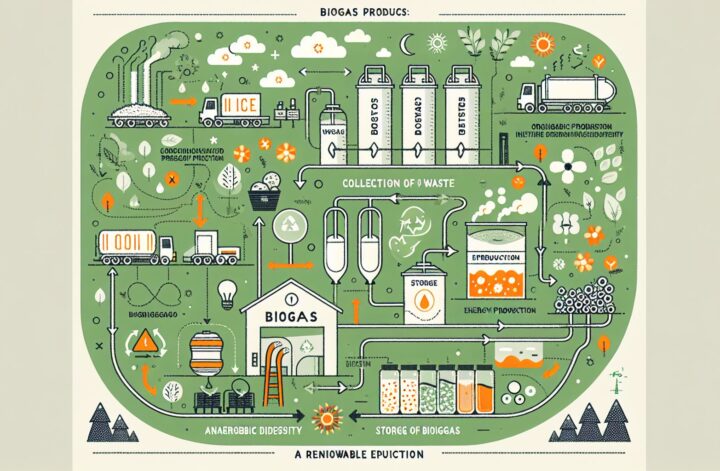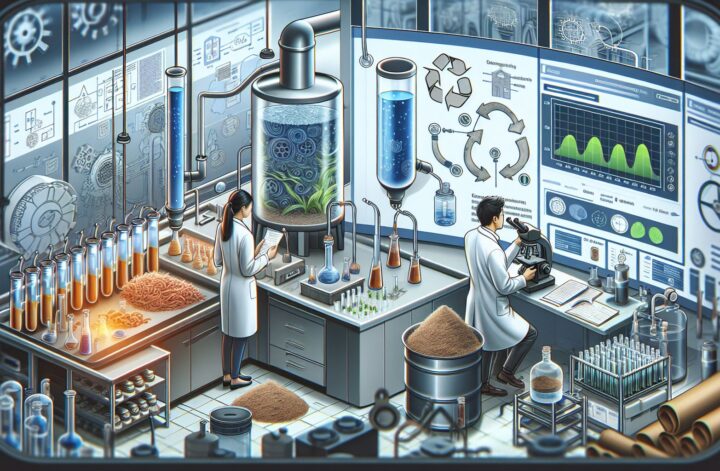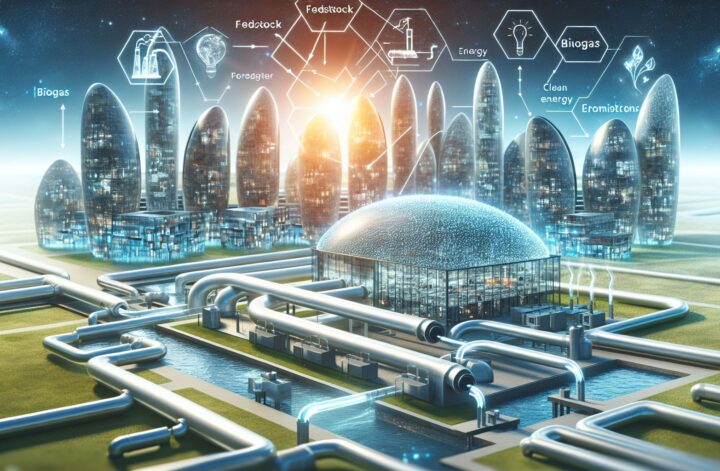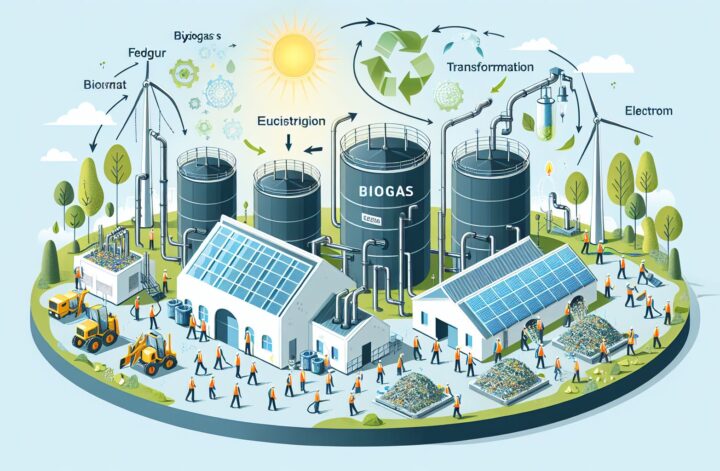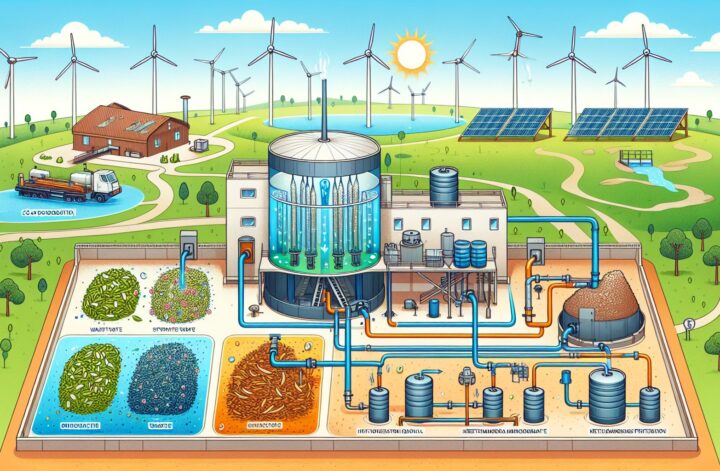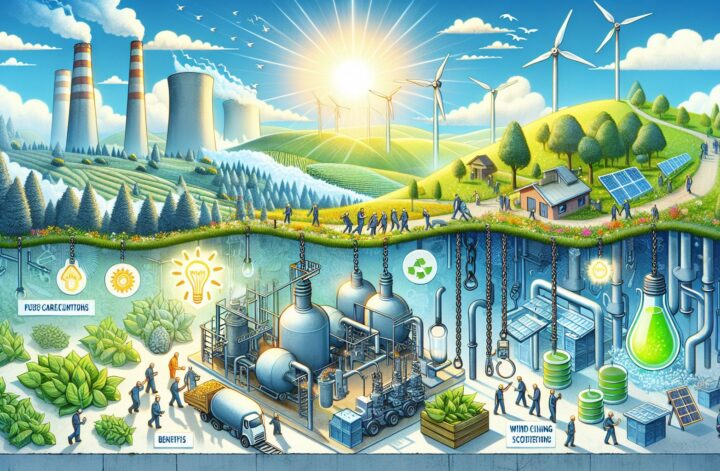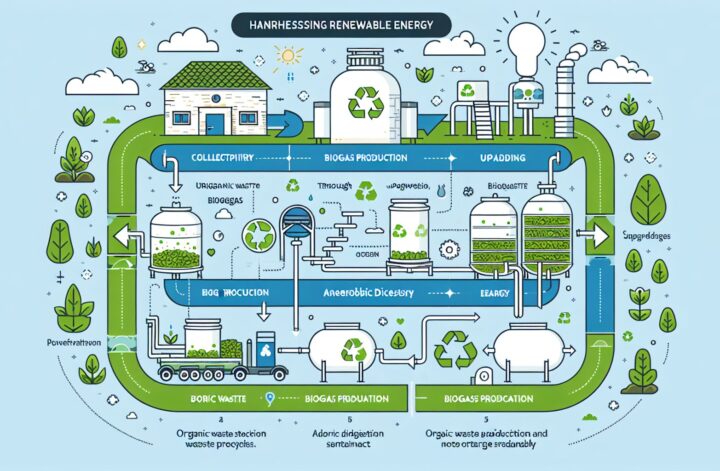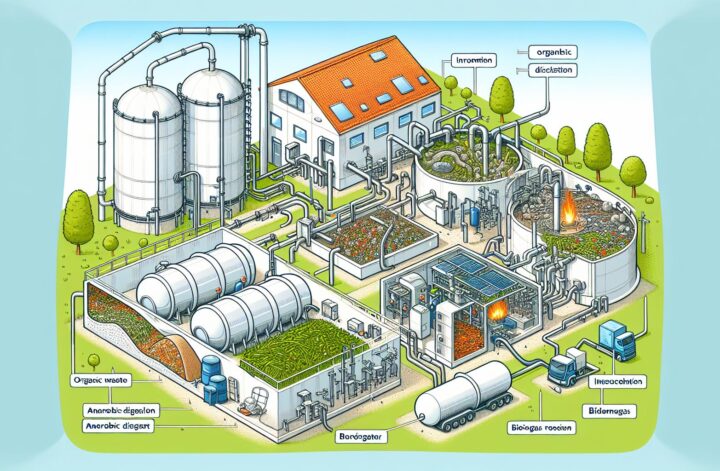The urgent call towards greener solutions has paved the way for various resourceful methods that not only ensure clean, renewable energy but also promote waste management. One such solution is ‘biogas production’, a strategy born out of the nexus of waste management and renewable energy focus. This fascinating world of biogas and its production process is a kaleidoscope of biology, chemistry, and engineering, presenting an opportunity for improved sustainability and economic benefits.
What is Biogas?
Biogas is a combustible gas comprised chiefly of methane (CH4), carbon dioxide (CO2), and other trace gases. It is produced when organic matter, such as agricultural waste, manure, plant material, sewage, or food waste, is broken down by microorganisms in a process called anaerobic digestion. This gas can be stored and used to generate heat or electricity or be purified to produce renewable natural gas and transportation fuels.
The Biogas Production Process
The production process of biogas is an exquisite dance of biological and chemical reactions facilitated by a myriad of unique microbial populations. This process generally takes place within an anaerobic digester and is divided into four phases: hydrolysis, acidogenesis, acetogenesis, and methanogenesis.
Hydrolysis: The first stage, hydrolysis, is where complex organic substances are broken down into simpler water-soluble molecules by hydrolytic bacteria. In essence, it kick-starts the digestion process, facilitating the other microbial phases. For instance, proteins are hydrolyzed into amino acids, fats into fatty acids, and complex carbohydrates into their constituent sugars.
Acidogenesis: Then comes acidogenesis, where these simpler organic compounds are converted into volatile fatty acids (VFA), CO2, H2, and other solvents. Specific acidogenic bacteria perform this stage, setting the stage for the subsequent phases.
Acetogenesis: In acetogenesis, the products from acidogenesis are converted into acetate, CO2, and H2. Syntrophic bacteria, which maintain balanced growth by exchanging metabolites with methanogens, are responsible for acetogenesis.
Methanogenesis: The final stage is methanogenesis, where methanogenic archaea convert acetates and H2/CO2 into methane and additional CO2. As the gas bubbles ascend the digester, a biogas rich in methane is efficiently captured.
Anaerobic Digester Design & Parameters
The rate and effectiveness of biogas production depends on several elements, including digester design and configuration, the material being digested, and environmental factors such as temperature and pH. Common digester designs include the continuous stirred tank reactor (CSTR), plug flow reactor (PFR), and upflow anaerobic sludge blanket (UASB), among others. Each design has its pros and cons, suitable for different digestion conditions and waste types.
Controlling and monitoring various operational parameters such as hydraulic retention time (HRT), organic loading rate (OLR), and temperature are also pivotal.
HRT is the average length of time a soluble compound remains in the digester. A shortened HRT may prevent complete digestion or induce system shock due to rapid changes in the digester environment.
The OLR is the amount of volatile solids fed into the digester per day. A high OLR can overload the system, increasing the VFA production, which in turn inhibits methanogenesis and suppresses biogas production.
The temperature impacts the microbial activity in the digester. Digesters generally operate under mesophilic (around 37°C) or thermophilic (around 55°C) conditions, with the latter often achieving a higher degradation rate and biogas yield.
Importance of Pumps
Pumps play a crucial role in biogas production systems. Here are some key points highlighting the importance of pumps in biogas production:
1. Substrate transfer: Pumps are used to transfer the organic substrate (feedstock) from the storage tank to the digester. This ensures a consistent and controlled flow of feedstock into the digester, maintaining optimal conditions for anaerobic digestion.
2. Mixing and homogenization: Pumps are employed to mix and homogenize the contents of the digester. Proper mixing prevents the formation of sediment layers and floating scum, which can hinder the digestion process. It also ensures uniform distribution of microorganisms, nutrients, and heat throughout the digester.
3. Recirculation of digestate: Pumps are used to recirculate the digestate (the material remaining after digestion) from the digester back into the system. This recirculation helps maintain the optimal pH, temperature, and nutrient balance within the digester, promoting efficient biogas production.
4. Biogas handling: Pumps are utilized to transport the produced biogas from the digester to the gas storage units or to the point of use (e.g., combined heat and power units). This ensures a steady supply of biogas for energy generation or other applications.
5. Effluent management: After digestion, pumps are used to transfer the digested effluent from the digester to storage tanks or post-treatment facilities. This is important for the proper management and disposal of the remaining digestate.
6. Temperature control: In some cases, pumps are used to circulate hot water or steam through heat exchangers to maintain the optimal temperature range for anaerobic digestion, which is crucial for the survival and performance of the microorganisms.
7. Process automation: Pumps, in conjunction with sensors and control systems, enable the automation of the biogas production process. This allows for precise control over feeding rates, mixing intervals, and other parameters, leading to optimized biogas yields and reduced manual labor.
In summary, pumps are vital components in biogas production systems, ensuring the efficient transfer of materials, mixing of the digester contents, recirculation of digestate, biogas handling, effluent management, temperature control, and process automation. The proper selection, sizing, and maintenance of pumps are essential for the smooth operation and optimal performance of biogas plants.
Challenges and Future Perspective
Biogas production, despite its advantages, also faces several challenges. Feedstock availability, sustaining the microbiology, avoiding inhibitory factors like ammonia and sulfide toxicity, and ensuring the optimal balance of trace elements are some examples. Moreover, the need for sophisticated infrastructure and heightened expertise may also present difficulties in resource-limited regions.
Regardless, the mounting threat of climate change and the potential to convert municipal and agricultural waste into a renewable source of energy makes biogas production an issue of paramount importance.
Looking ahead, advancements in digester design, feedstock pre-treatment methods, and the use of genetic engineering to enhance the performance of the microflora involved in methanogenesis could potentially increase the efficiency and output of biogas production.
In conclusion, biogas production represents a promising solution towards cleaner, renewable energy and improved waste management. As we continue to delve deeper into this fascinating world, let’s hope we can unlock and maximise its potential, contributing to a greener and more sustainable future for us all.

